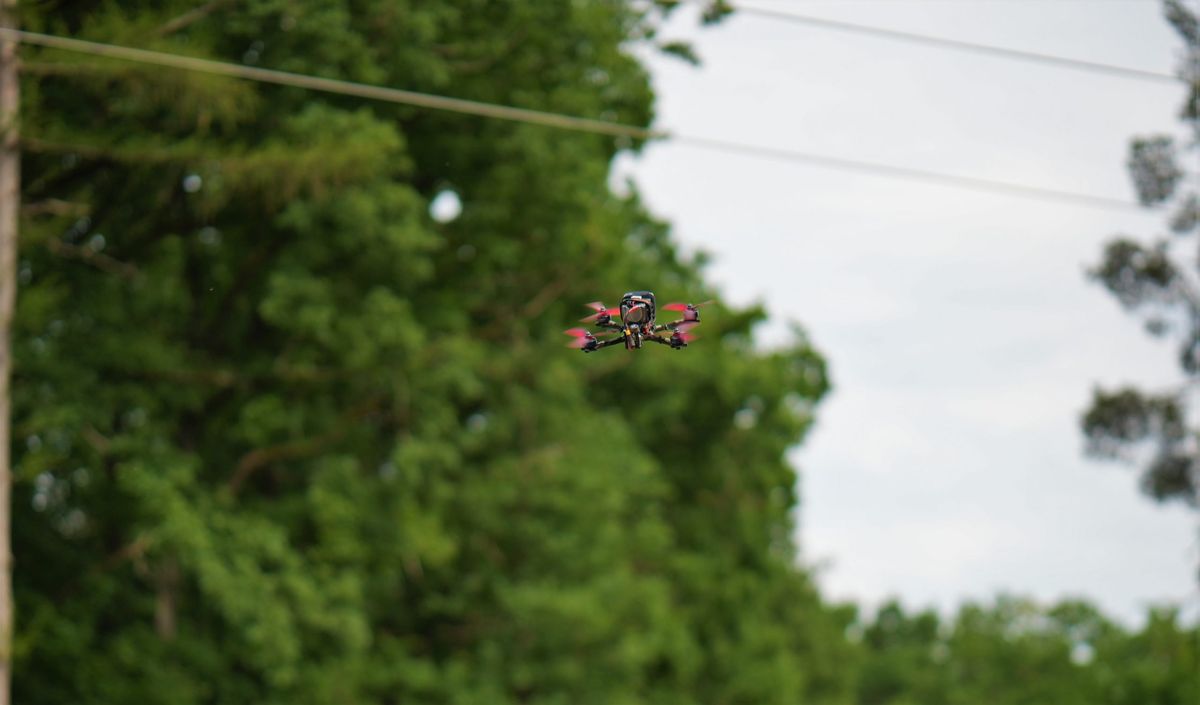A quick cinewhoop drone for FPV beginners is the DJI Avata.

Cinewhoop drones are popular right now because they can dive, twist, and speed through inaccessible areas to provide beautiful footage. DJI has jumped on that trend with the Avata, an FPV drone that is a long cry from the company’s fast DJI model, also known as the FPV. Instead, the Avata focuses on agility and includes propeller guards that allow it to fly safely around humans.
It comes with the new Goggles 2, which are smaller and lighter than the Goggles V2 included with the DJI FPV drone. It is also available with an upgraded Motion Controller, which allows you to manoeuvre the Avata by moving your wrists.
The kit, which costs $1,388 with the Goggles 2 and Motion Controller, might allow drone owners delve into the realm of FPV and cinewhoop. I enlisted my drone pilot friend Samuel to test it in a variety of hard settings to see how it compares to the FPV and other drones.
The Avata is unlike any other consumer drone from DJI. It includes prop protectors and a compact, 7-inch square by 3.1-inch high body to fly inside, around people, or in confined locations. At 410 grams it’s much lighter than the FPV, but a bit heavier than the 249-gram Mini 3 Pro. As a result, it is required to register or obtain a licence in Europe, the United States, and many other nations.
The batteries include a flexible connection that is meant to reduce collision damage. DJI advertises up to 18 minutes of flight duration, however we got approximately 10-12 minutes on average, and much less if we flew it incredibly rapidly. That’s still reasonable for an FPV drone (most are under 10 minutes), however DJI could be more realistic in this regard.
The Avata’s battery charges in around 45 minutes, and the $279 Fly-More package includes two extra batteries and a charger. Samuel stated that if he purchased one for his photography company, he would receive at least six batteries.
The USB-C connector for transfers and charging is also difficult to access. DJI often excels with these sorts of things, however they are genuine design problems. On the positive side, the Avata features 20GB of internal storage that might come in handy in an emergency.
Two time-of-flight sensors beneath can detect and map ground impediments. However, because the Avata lacks forward-facing sensors, its primary safety is provided by the prop guards and tough build.
The only method to fly the Avata Pro View Combo is using the DJI Motion Controller. You may also use the FPV Remote Controller 2, but it costs $200 individually.
The new Goggles 2 – not to be confused with the Goggles V2 – are also included in that combo. They’re smaller and lighter than the Goggles V2, and they feature micro-LED displays instead of OLED panels, with 1080p resolution for each eye against 810p on the Goggles V2. The V2 can be used with both the Avata and FPV, while the Goggles 2 are only compatible with the Avata.
Although the enhanced clarity and tiny size are appealing, you cannot use glasses beneath the Goggles 2. Instead, they contain diopters built in to adjust your vision. If you have astigmatism, DJI supplies lens mountings that you may return for a prescription.
Samuel wasn’t a fan of the diopter. While they provided him with a clear perspective, he frequently had to remove the headset to see the drone, which required him to put his glasses back on. He preferred the Goggles V2 since he could wear his spectacles underneath.
The Goggles 2 let you to fly the Avata without a phone since they have a mini-version of the DJI Fly software. However, if you wish to share your screen with others, you may attach a smartphone via the USB-C connector on the side. The Avata is controlled by the Goggles 2 through DJI’s Ocusync O3, which provides a 50Mbps video stream from up to 6.2 miles away. However, we discovered that the Goggles V2 deliver a more powerful signal over a greater distance.
Performance
The Avata is a lot of fun to fly, although it isn’t as quick as some FPV drones. It has a peak speed of 60 miles per hour in manual mode, which is far less than the 87 miles per hour of DJI’s FPV. That’s in manual mode; sport and regular settings are far slower, at 31 and 18 MPH, respectively.
It has incredible mobility, allowing you to fly in situations where no other drone would go. We carried it around handball players during practise, between our knees, through a small gap in a sign, across a castle rooftop, and within with people and sensitive items around. It’s also difficult. There were several crashes that would have killed an open-prop drone. It can also bounce off a person without causing any harm.
Given that the Avata may be many people’s first FPV drone, offering it with the Motion Controller is a nice idea – but not the only choice. DJI should sell it in conjunction with the FPV Controller 2, which provides more accurate control for advanced users. You must currently spend an additional $199 to obtain it.
The Motion Controller is simple to use; simply position it in the direction you want to fly and pull the trigger to accelerate. To climb, tilt the joystick upward and apply force; to descend, do the opposite. A giant button on top hovers it, and a red button allows you to take off and land.
It does, however, have certain restrictions. Because the Motion Controller cannot transition vertically or fly backwards, landing requires the use of a button. It is also imprecise, especially indoors. In reality, we discovered that without an internal GPS lock, the Avata was occasionally unflyable using the Motion Controller.
The FPV Controller 2 is a better alternative if you have some expertise. It enables you to use manual mode to fly faster, lower to the ground, and zigzag through trees or roofs. You can fly exactly between rooms, objects, and people within, much as in some of those great cinewhoop FPV films.
Flips, dives, climbs, hairpin bends, rolls, and other stunts are also available in manual mode. Remember that there are no sensor protections. While the Avata drone is durable, it is not indestructible and could seriously injure someone at 60 mph. It’s also more unstable, thus piloting it takes a lot of expertise. It’s a lot of fun, though, with the speed and lack of safety delivering a true adrenaline rush that other drones don’t provide.
Video quality
The majority of so-called Cinewhoop FPV drones require external cameras like as the GoPro Hero Bones (or even standard stripped-down GoPros), however the Avata has one built in. It employs the same 1/1.7-inch sensor as the new Action 3 camera, but with 64% larger area than the FPV.
It, too, includes regular, wide, and ultra-wide choices, with a 155-degree field of vision. In addition to the built-in gimbal and RockSteady smoothing, it features the HorizonView option to keep everything level even if the drone is substantially tilted.


